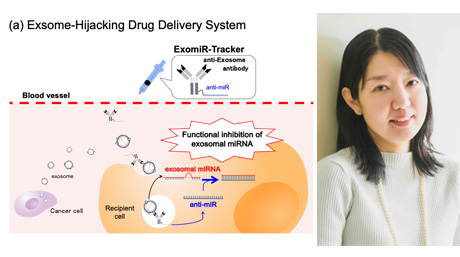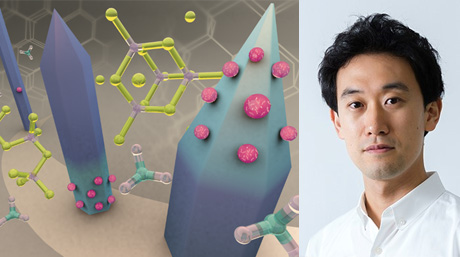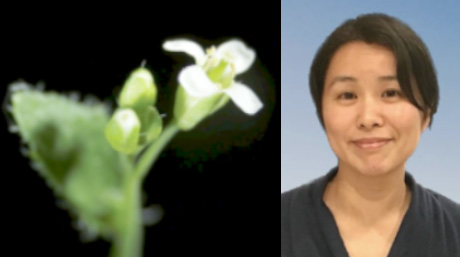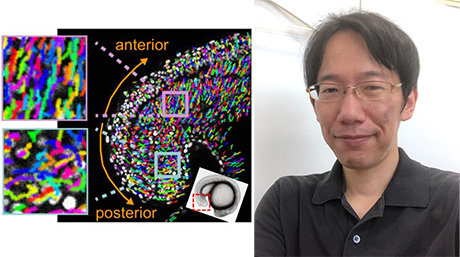Life Science and Technology News
【Labs spotlight】 Hirasawa Laboratory
Metabolic engineering toward bioproduction
The Department has a variety of laboratories for Life Science and Technology, in which cutting-edge innovative research is being undertaken not only in basic science and engineering but also in the areas of medicine, pharmacy, agriculture, and multidisciplinary sciences.
This "Spotlight" series features a laboratory from the Department and introduces you to the laboratory's research projects and outcomes. This time we focus on Hirasawa Laboratory.

Areas of Supervision
Primary/Life Science and Technology
Associate Professor Takashi Hirasawa![]()
| Degree | PhD 2002, Tokyo Institute of Technology |
|---|---|
| Areas of Research | Molecular Microbiology, Metabolic Engineering |
| Keywords | Metabolic engineering of microorganisms, Bioproduction, Applied microbiology |
| Website | Hirasawa Laboratory |
Research interest
Microbial cells can be recognized as useful hosts for bioproduction, which have called "cell factories," due to the high growth rate and metabolic activities. We are studying bioproduction of useful materials such as organic acids and amino acids using microbial cells based on the "omics" approach and in silico metabolic simulation toward development of rational molecular breeding strategies. In our laboratory, metabolic engineering of various microorganisms such as Escherichia coli, a glutamic acid-producing bacterium Corynebacterium glutamicum and the yeast Saccharomyces cerevisiae have been studied for bioproducion. In addition, we are studying molecular mechanism of amino acid production by C. glutamicum. L-Glutamic acid is known as a flavor enhancer and has been produced by fermentation using C. glutamicum. Glutamic acid fermentation has been known as an efficient bioproduction process without cell growth. However, the mechanism of glutamic acid production has been obscure. In our laboratory, molecular mechanism analyses of glutamic acid production by C. glutamicum have been conducted. We have expected that the glutamic acid production process by C. glutamicum can be applied to other bioproduction processes.
Research findings
Selected publications
- [1] Takashi Hirasawa, Hiroshi Shimizu (2016) Recent advances in amino acid production by microbial cells. Current Opinion in Biotechnology 42:133-146.
- [2] Yoshohiro Toya, Takashi Hirasawa, Shu Ishikawa, Onuma Chumsakul, Takuya Morimoto, Shenghao Liu, Kenta Masuda, Yasushi Kageyama, Katsuya Ozaki, Naotake Ogasawara, Hiroshi Shimizu (2015) Enhanced dipicolinic acid production during the stationary phase in Bacillus subtilis by blocking acetoin synthesis. Bioscience, Biotechnology, and Biochemistry 79:2073-2080.
- [3] Yuto Yamauchi, Takashi Hirasawa, Masato Nishii, Chikara Furusawa, Hiroshi Shimizu (2014) Enhanced acetic acid and succinic acid production under microaerobic conditions by Corynebacterium glutamicum harboring Escherichia coli transhydrogenase gene pntAB. Journal of General and Applied Microbiology 60:112-118.
- [4] Kento Tokuyama, Satoshi Ohno, Katsunori Yoshikawa, Takashi Hirasawa, Shotaro Tanaka, Chikara Furusawa, Hiroshi Shimizu (2014) Increased 3-hydroxypropionic acid production from glycerol, by modification of central metabolism in Escherichia coli. Microbial Cell Factories 13:64
- [5] Yuma Ito, Takashi Hirasawa, Hiroshi Shimizu (2014) Metabolic engineering of Saccharomyces cerevisiae for improving succinic acid production based on metabolic profiling. Bioscience, Biotechnology, and Biochemistry 78:151-159.
- [6] Yuki Usui, Takashi Hirasawa, Chikara Furusawa, Tomokazu Shirai, Natsuko Yamamoto, Hirotada Mori, Hiroshi Shimizu (2012) Investigating the effects of perturbations to pgi and eno gene expression on central carbon metabolism in Escherichia coli using 13C metabolic flux analysis. Microbial Cell Factories 11:87.
- [7] Jongpill Kim, Hirohisa Fukuda, Takashi Hirasawa, Keisuke Nagahisa, Kazuo Nagai, Masaaki Wachi, Hiroshi Shimizu (2010) Requirement of de novo synthesis of the OdhI protein in penicillin-induced glutamate production by Corynebacterium glutamicum. Applied Microbiology and Biotechnology 86:911-920.
- [8] Nobuyoshi Ishii#, Kenji Nakahigashi#, Tomoya Baba#, Martin Robert#, Tomoyoshi Soga#, Akio Kanai#, Takashi Hirasawa#, Miki Naba, Kenta Hirai, Aminul Hoque, Pei Yee Ho, Yuji Kakazu, Kaori Sugawara, Saori Igarashi, Satoshi Harada, Takeshi Masuda, Naoyuki Sugiyama, Takashi Togashi, Miki Hasegawa, Yuki Takai, Katsuyuki Yugi, Kazuharu Arakawa, Nayuta Iwata, Yoshihiro Toya, Yoichi Nakayama, Takaaki Nishioka, Kazuyuki Shimizu, Hirotada Mori, Masaru Tomita (2007) Multiple high throughput analyses monitor the response of E. coli to perturbations. Science 316:593-597. (#Equally contributed)
- [9] Takashi Hirasawa, Katsunori Yoshikawa, Yuki Nakakura, Keisuke Nagahisa, Chikara Furusawa, Yoshio Katakura, Hiroshi Shimizu, Suteaki Shioya (2007) Identification of target genes for conferring ethanol stress-tolerance to yeast Saccharomyces cerevisiae based on DNA microarray data analysis. Journal of Biotechnology 131:33-44.
- [10] Takashi Hirasawa, Masaaki Wachi, Kazuo Nagai (2000) A mutation in the Corynebacterium glutamicum ltsA gene causes susceptibility to lysozyme, temperature-sensitive growth, and L-glutamate production. Journal of Bacteriology 182:2696-2701.
Contact
Associate Professor Takashi Hirasawa
Room 1109, J2 building, Suzukakedai campus
E-mail : thirasawa@bio.titech.ac.jp
*Find more about the lab and the latest activities at the lab site![]() (Japanese).
(Japanese).
*May 1, 2025:Some of the content has been updated with the latest information.





